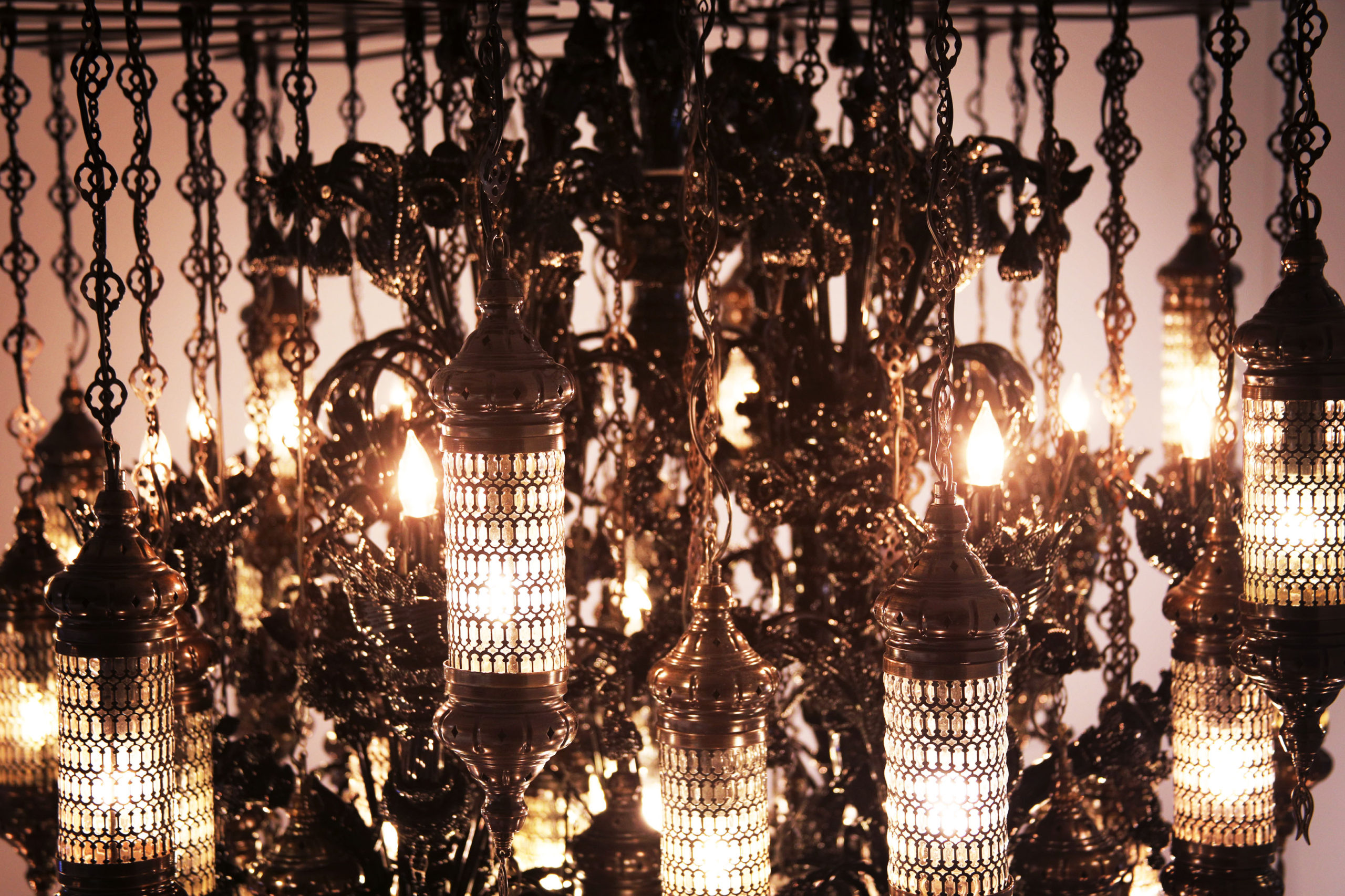By: Abbey Raynes
With the installment of two chandeliers, “A Moth of Peace” and “The Way the Moon’s in Love with the Dark” in the Viking Union on Nov. 12, one might ask why are they there and what is their significance?
Esteemed artist Fred Wilson and his team reflected on the new chandeliers that were put into place while highlighting the process of the new chandeliers.
At his guest speaking lecture a few months back, Wilson said the 600 pound chandeliers are influenced by Ottoman and Venetian styles that tackle different social issues, specifically regarding their relationships intertwined with Black history. Using that historical influence, Wilson thought of using Othello because “he is the most famous African of Venice that never lived.”
His first exhibition called “Speak of me As I Am: Chandelier Mor” which was a quote from Shakespeare’s Othello, inspired and curated “A Moth Peace.” The white chandelier exudes the relationship between the characters, Othello and Desdemona. The title is a direct line from the book as Desdemona says, “A moth of peace, and he go to the war, The rites for why I love him are bereft me And I a heavy interim shall support By his dear absence. Let me go with him.” This line provokes the idea that she is useless without Othello’s love and life wouldn’t be worth living.
Wilson has made other similar works that often reference or take lines from Shakespeare, allowing him to dig deeper between the relationships Othello shares with other characters like another chandelier piece called “To Die Upon a Kiss” that focuses on the death of Othello and Desdemona.
Contrasting to his many Venetian inspired works like “A Moth Peace”, the black chandelier called “The Way the Moon’s in Love with the Dark” was influenced by Russian writer Alexander Pushkin, with the title based on one of his poems. Pushkin’s great grandfather was an enslaved Black man who was kidnapped by the Ottomans and eventually given to Peter the Great. Because of that backstory, Pushkin felt inspired to write about his great grandfather and his legacy.
While the two chandeliers differ in size and color, Wilson wanted the pieces to be arranged in connection with each other, but separate at the same time. They can be seen from similar vantage points even if they contrast each other.
“I’m happy where it’s been arranged because that means a lot of people will be able to see them walking in everyday,” Wilson said. “Meaning they’re out in the world and will take on their own life.”

Once the positioning of the chandeliers was solidified, an installation team first began to discuss the suspension plan. The plan took a large amount of collaboration and coordination. With the help of Mark Wickman, Joe Weber, Justin Horne, Hafthor Yngvason, Alex Gibson, Jody Thompson and others, the chandeliers were put into place in about a week and a half.
AS Review photographer Sophia Nuun spoke to Jody Thompson, the current preparator at WWU’s Western Gallery, to talk about the installation process in which he helped.
Thompson said the beginning process involved moving the materials across campus to the Viking Union, where they unpacked large crates and unwound bubble wrap from what felt like hundreds of individual flowers, connecting pieces, lamps and other structural items.
After the first days unwrapping items, he said they went on to organize the glass pieces and installed some of the larger structure, where electricians ran wires through the frames. The next step after the main structure was to place all the individual arms, bowls, lamps and flower elements. Thompson added it involved a lot of composure and patience while dealing with fragile objects and meticulous placing.
“This became increasingly more difficult as more and more elements went into place,” Thompson said. “Oftentimes coming millimeters from brushing up against another glass piece or creating an uncertain feeling of tension in the angle of placement which would very easily snap the piece.”
Once they finished placing all of the glass pieces, the next task was to hang the Ottoman lamps on the black chandelier. Thompson said they had to be careful not to interfere with other elemental objects because it would potentially risk damage.
After the lamps were hung, one of the last steps was running the circuits through the top where electricians had wired them in. The final step of the process was screwing the bottom decorative bowl onto the chandelier and then it was done.

WWU // Jody Thompson
Looking back onto the process, Thompson said the operation was smooth and direct, with no mistakes or major issues because of the coordination.
With Justin Horne’s experience as Wilson’s hand and preparator for the Pace Gallery in New York, Hafthor Yngvason’s team of experienced glass art handlers and WWU’s own electricians/carpenters Joe Weber and Mark Wickman, the work was made a little easier.
“I believe the experience between the four of us helped us all have confidence in the installation and reduced any stress that could cause delays or doubt,” Thompson said.
With the chandeliers on display for three months, Fred Wilson’s work has not gone unnoticed; the Viking Union now has two beautiful sculptures that evaluate history through the beauty of poems, nuance and personal narrative.

